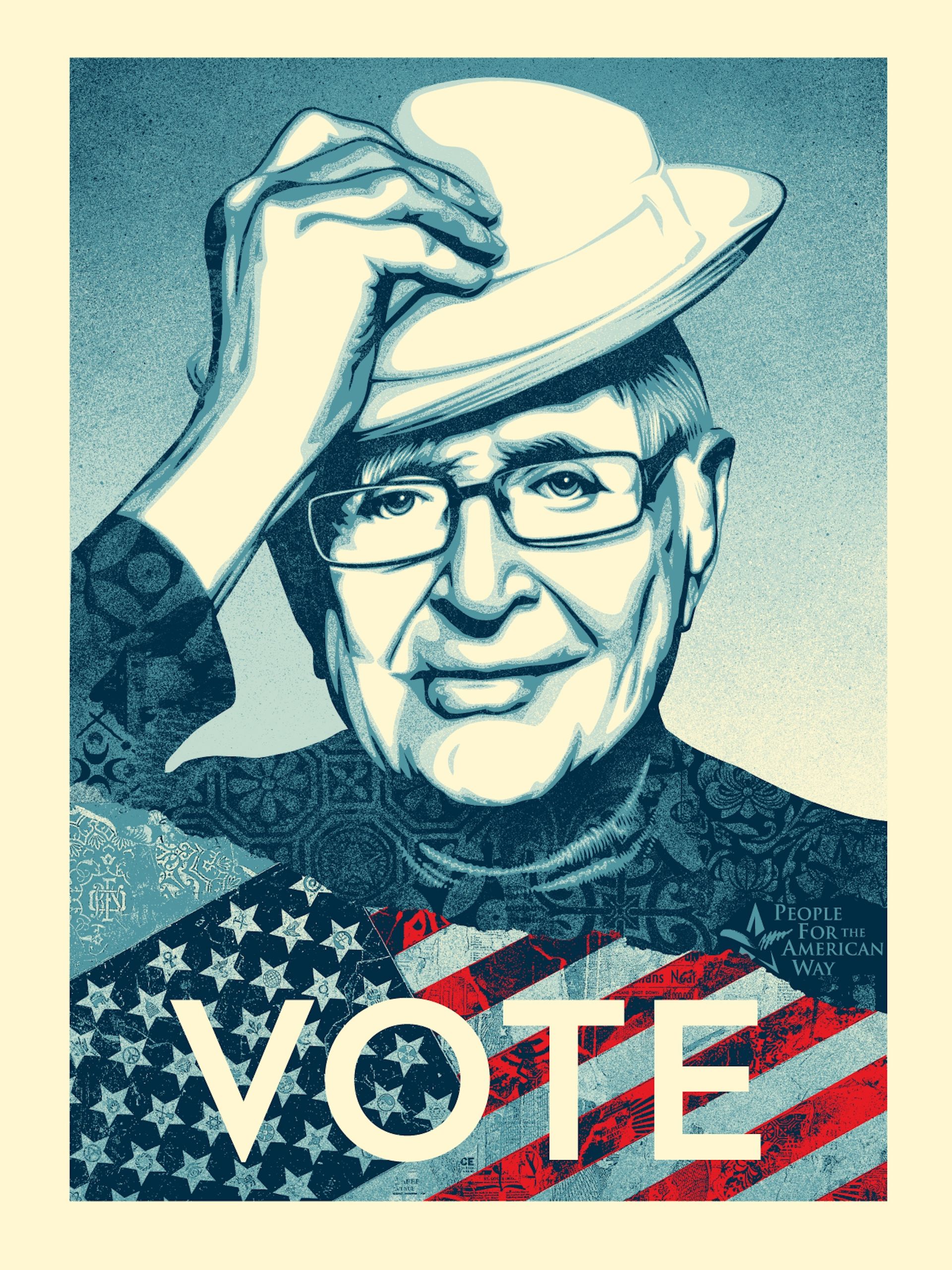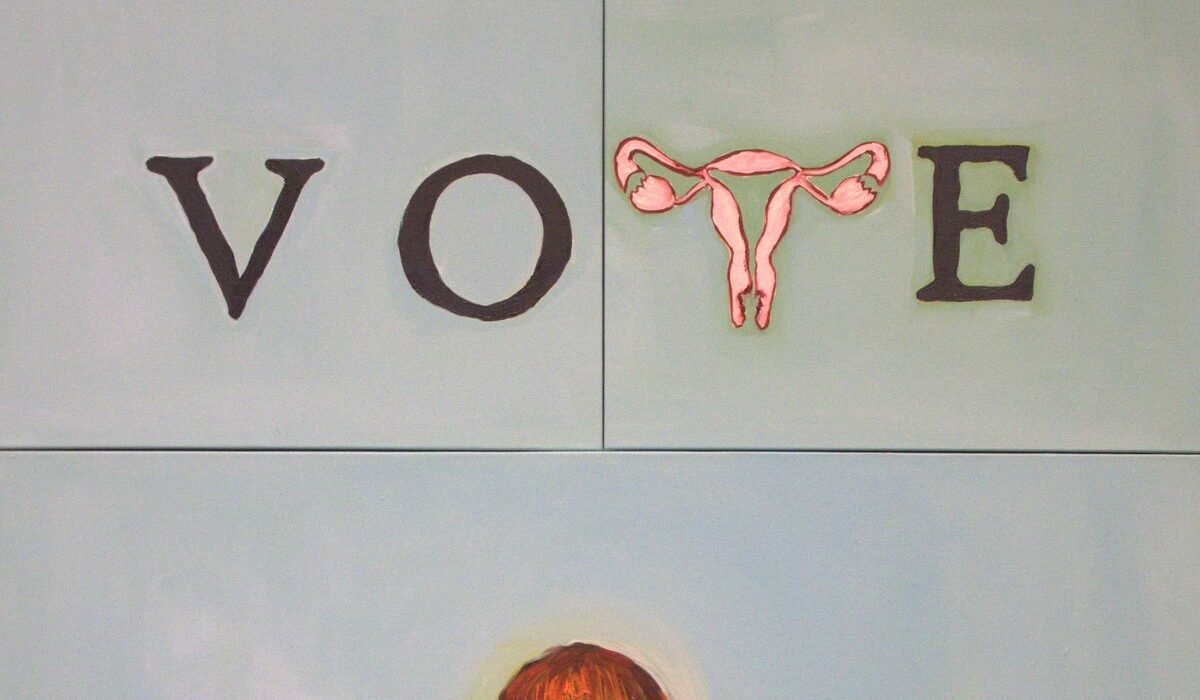Art has the power to transform the world. It reaches people in ways that conventional language cannot. It shapes culture and drives political movements. Visual artists, poets, musicians and performers of all kinds hold immeasurable sway over the hearts and minds of people worldwide, and have since the dawn of civilisation.
Today, the US stands at an unprecedented and dangerous crossroads. Our nation’s nearly 250-year-old democracy is under siege from enemies both foreign and domestic, and the results of our presidential election in November will forever shape the future of our country, our democracy and the modern world as we know it. This is where art meets activism.
Artists For Democracy 2024, a project led by People For the American Way, is working with world-renowned artists such as Shepard Fairey, Carrie Mae Weems, Beverly McIver, Titus Kaphar, Wangechi Mutu, Cindy Sherman, Hank Willis Thomas, Jeffrey Gibson, Ann Hamilton and others, to create works that speak to the precarious moment that we are in and to mobilise voters to the polls to defeat an existential threat to our democracy—Donald Trump.
As creative interpreters of the world around them, artists across the US are taking note of this threat and taking up their tools to paint a picture, metaphorically and literally, of what is at stake in the 2024 US presidential election and beyond.
Shepard Fairey, the street artist who became globally renowned in 2008 for his Hope portrait of Barack Obama that spoke to our hopes and dreams, has already contributed four new pieces to Artists For Democracy 2024, with messages like “defend democracy against fascism”. He also serves as a spokesperson and helps convene the group of artists who are contributing to this campaign, along with Carrie Mae Weems, who also serves on the board of directors for People For the American Way. Throughout their careers, both have used their art as a form of activism to help shape political discourse and cultural dialogue.
Power of the billboard
One of the pieces Fairey created for the campaign is a portrait of the legendary television producer Norman Lear, who died in December 2023 at the age of 101. The work is an homage to his life, legacy and founding of People For the American Way more than 40 years ago, to fight back against right-wing extremism and to defend the fundamental liberties established by the US Constitution. Lear’s mission and legacy of using arts and entertainment to impact politics and culture is perhaps even more relevant now than ever before in recent history.

Shepard Fairey, Norman Lear portrait, 2024 Courtesy the artist and People For the American Way
In addition to inspiring people to take action and vote in the upcoming election, art can help reframe and recontextualise the concepts of freedom, justice and liberty, which are often co-opted by far-right zealots who want to advance an agenda that is antithetical to the true meanings of those terms. Nowhere is this more striking than with the concept of freedom. Some Republican politicians have based entire political narratives on the idea of defending individual freedom, while actively promoting and passing policies that deny individual freedoms—for example, the disastrous rollback of reproductive rights since the overturning of Roe vs. Wade, which is most consequential for women, people of colour and other historically marginalised communities.
With access to abortion shaping up to be a powerful, deeply personal and defining issue in the 2024 election, several artists participating in Artists For Democracy 2024 have created works that speak to the ongoing assault on reproductive freedom and call on us to take the boldest action of all in protecting this right: vote. Beverly McIver speaks to the intersecting issues of race and gender justice in her piece titled VOTE Black Beauty (2024).
With the election six months away, the Artists For Democracy 2024 campaign has only just begun its efforts to use art that cuts through the noise and inspires people to the polls to defeat Trump. Since its launch in early April, which began with a ten-minute segment by Rachel Maddow, the campaign continues to prioritise fundraising efforts to support multi-platform public engagement before the election, placing the powerful art on billboards and other direct media in battleground states, urging people to vote.
The transcendental and transformative power of art is a necessary part of political and social change. With so much at stake, the artists uniting in this effort are using their work as an extension of their civic participation as citizens, and using their platforms as cultural influencers to save democracy and protect the ideals of a “more perfect union”.
- Rio Tazewell is the director of campaigns at People For the American Way







